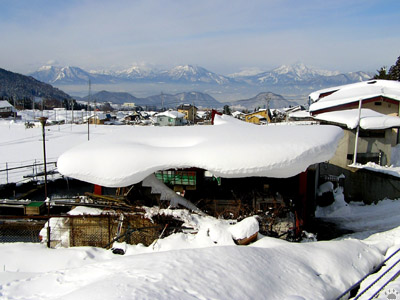
Yudanaka town, Honshu.
Part 6. Snow Country
Mountain chains run along the entire length of Honshu. Their highest part is in the center of the island. This area, called Japanese Alps, gets up to 3 m (10') of snow in winter. Life there is tough - you have to put a lot of work into removing snow from your roof and driveway.
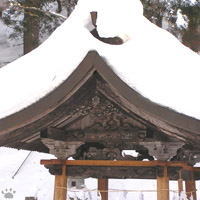
Shinto shrine, Togakushi, Honshu. |
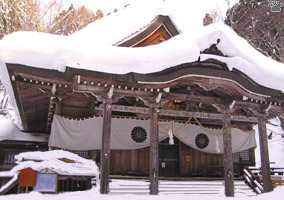
Some mountain shrines get cut off by the snow in winter. Togakushi. |
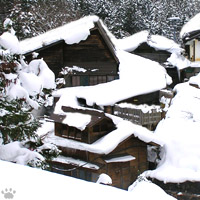
Togakushi, Honshu. |

There is much less snow at lower elevations. Karuizawa, Honshu. |
Thick snow cover is also difficult for wildlife. Many animals hibernate or move to lower elevations. But there is one surprising exception.
|

Japanese hare (Lepus brachyurus), Karuizawa, Honshu. |
 |
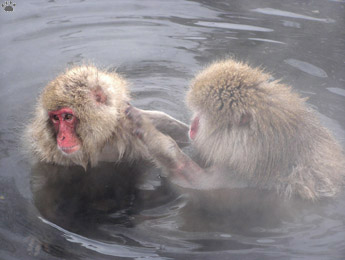 |
| Japanese macaques (Macaca fuscata), Yudanaka, Honshu. |

Male Japanese macaque, Yudanaka.
|
Japanese macaques mostly spend winters in subtropical forests in warm coastal parts of the country. But one population has learned to survive year-round in the mountains by using hot springs.
|
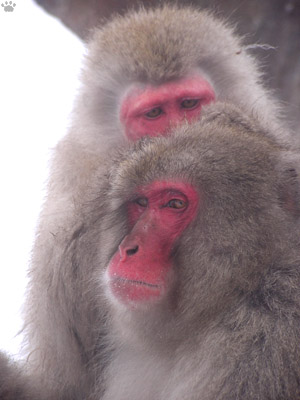
Male Japanese macaque, Yudanaka. |
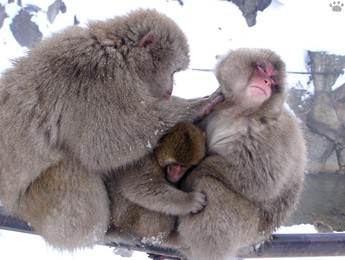 |
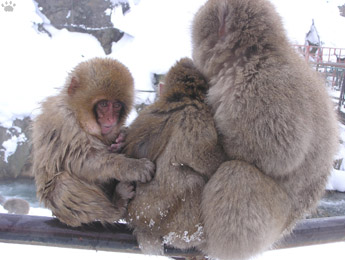 |
| Japanese macaques grooming, Yudanaka. |

Japanese macaques, Yudanaka.
|
They have to spend a lot of time in a small area, so they are noticeably less aggressive and more friendly than most other monkeys.
|
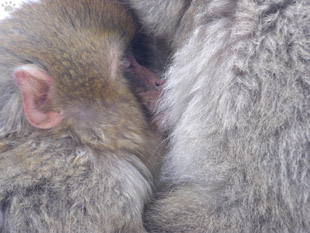
Japanese macaques, Yudanaka. |
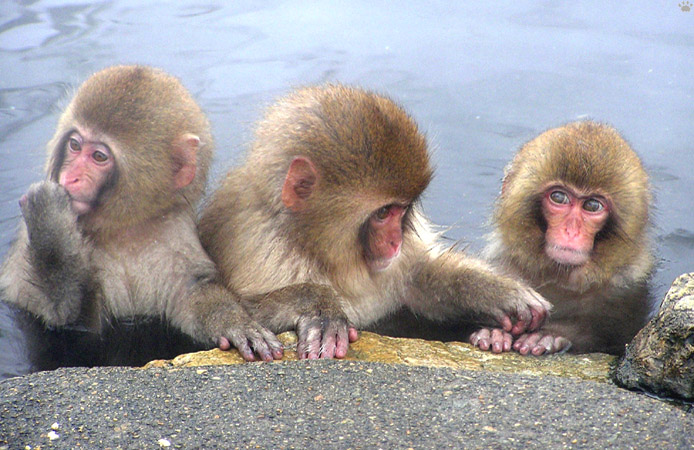
Interestingly, monkeys have more intelligent looks than most people who don't accept Darwin's theory. |

Japanese macaques, Yudanaka.
|
In winter, these monkeys grow long coats. Babies become impossibly cute. They are also very quiet and well- behaved.
|
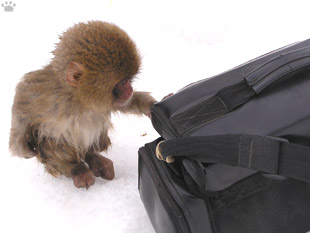
"Is it a Sony camcorder?" |
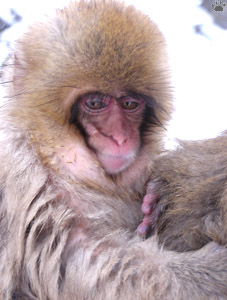 |
 |
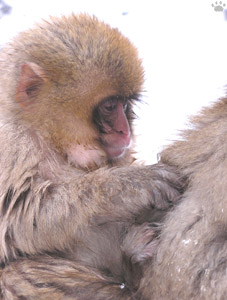 |
| Japanese macaques, Yudanaka. |
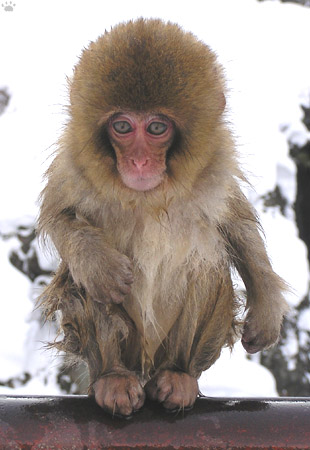
Baby Japanese macaque after a bath, Yudanaka.
|
You'd expect such a place to be a popular tourist attraction, but it isn't. In three hours I'd spent at the springs, I saw one Western couple and no Japanese visitors. And I was the only guest in the town's nice onsen inn.
|
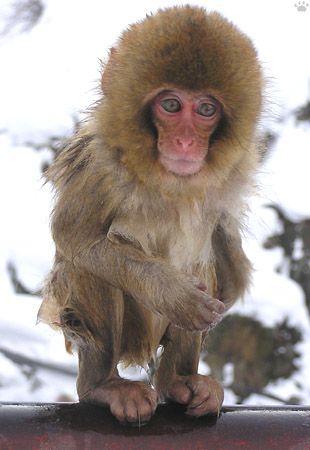
Baby Japanese macaque after a bath, Yudanaka. |
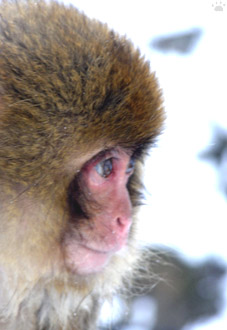 |
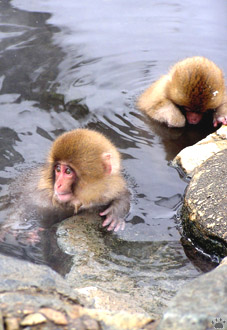 |
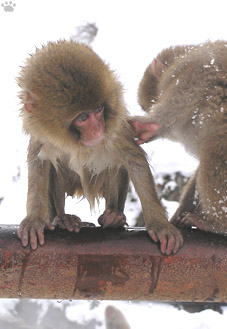 |
| Japanese macaques, Yudanaka. |

Japanese macaques don't have much of a tail.
|
Seeing the monkeys at the hot springs is easy: take a train from Nagano to Yudanaka, then a bus to Kanbayashi, and walk for half an hour.
|
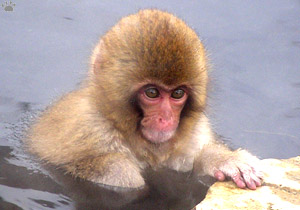
It's still two months until spring... |
 |
 |
| Japanese macaques, Yudanaka. |
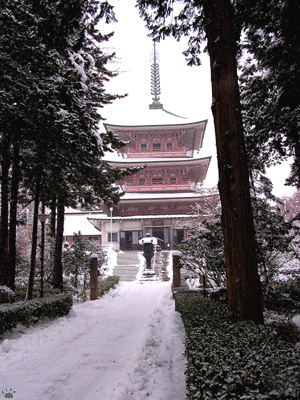
Pagoda of Zenkoji Temple, Nagano.
|
Coastal plains and valleys of Japan are densely populated, but relatively few people live in the mountains. Nagano, the largest city in the Snow Country, has only 360,000 inhabitants. It never gets snowed in as badly as some villages, but it sure has "real" winter. |
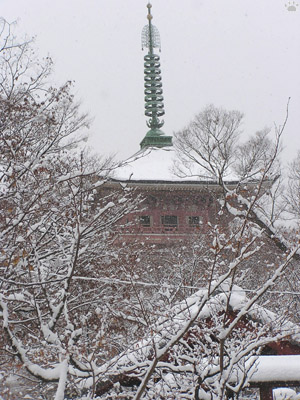
Pagoda of Zenkoji Temple, Nagano.
|
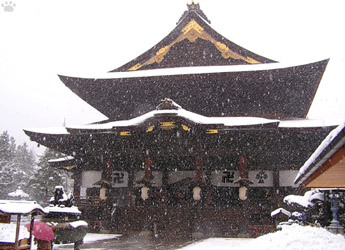
Main hall of Zenkoji Temple, Nagano.
|
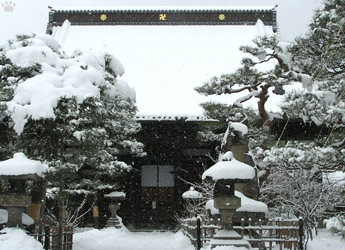
Side pavilion, Zenkoji Temple, Nagano.
|
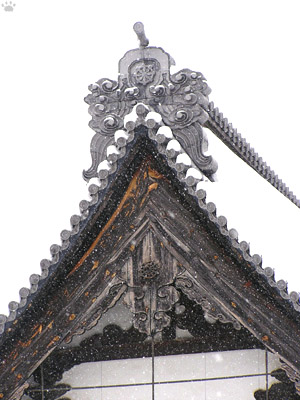
Roof of side pavilion, Zenkoji Temple, Nagano.
|
The city was built around Zenkoji - the most popular Buddhist temple in Japan. In addition to a huge main hall and pagoda, the temple has beautiful side pavilions and gardens that few people bother to see. Unlike in the main hall, you are allowed to take photos there. |
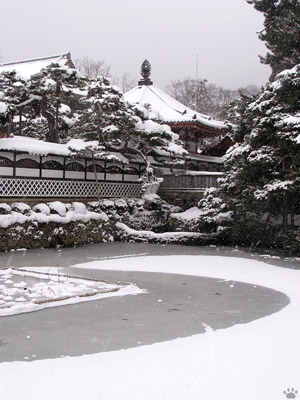
Garden, Zenkoji Temple, Nagano.
|
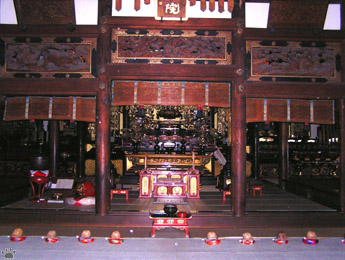 |
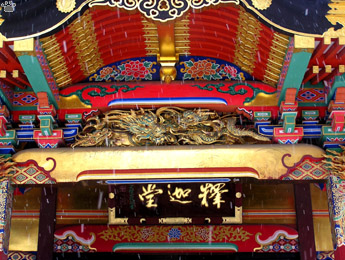 |
| Interior details, Zenkoji Temple, Nagano. |
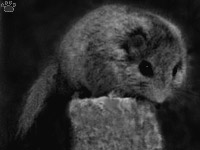
Japanese dormouse (Glirulus japonius), Nara.
|
Complex wooden structures of Japanese temples and shrines are used by a surprising array of inhabitants. Winter wrens and tiny Japanese dormice use roofs as shelters from winter weather. Actually, dormice are supposed to hibernate, but they would sometimes come out on a warm evening to find some berries in temple gardens.
|
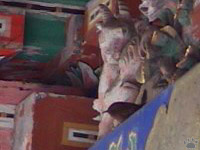
Winter wren (Troglodytes troglodytes), Nagano. |
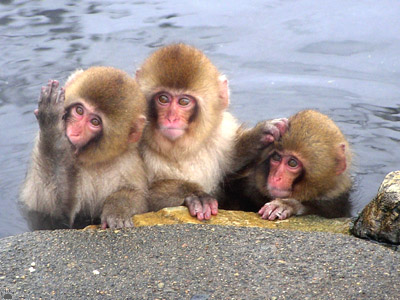
Japanese macaques, Yudanaka. |
Part 7: Tokyo
Back to Part 5 Home
|